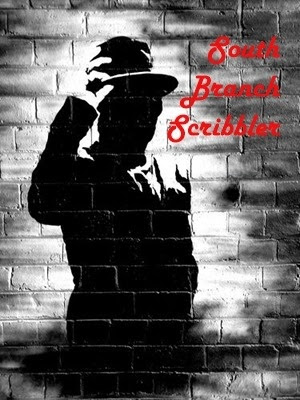Romance...beautiful, wonderful romance.
The Scribbler is fortunate to have an author of historical romance as our guest this week.
Thank you for
having me on your blog, Allan!
To introduce myself, I’m Victoria
Hanlen and I write Historical Romance.
In 2016 I published two novels with
HarperCollins:
The Trouble With Misbehaving and The
Trouble With Seduction.
I was
fortunate to have a father with a flair for storytelling and a mother who was a
schoolteacher. Dad would entertain us with witty stories about the farm he grew
up on and the places he'd traveled. Mom made sure we learned our three
R's and encouraged the love of reading. As a kid, I enjoyed the Nancy Drew
Mysteries and fairytales with happily ever afters. In junior high we were
assigned to read Wuthering Heights,
and I’ve been a big fan of historical romance ever since.
I've written all my life and later worked in jobs
that required strong writing skills. Along the way, I sang in professional
opera and performed in Shakespeare and regional theater.
Eventually, I started writing short
stories and then novel length. The cross training in theater applied well to
character motivation and scene development. I especially love improvisation and
the concept of saying 'yes' to a crazy idea and building a scene on the spot.
I also find it thrilling when my characters come alive and say or do
something outrageous.
I’m a member
of Romance Writers of America, RNA, The Beau Monde RWA, and Connecticut Romance
Writers. I live with my husband and a host of wildlife in rural New England,
U.S.A.
VICTORIA
HANLEN Guest Post
A question I’m often asked is how I came up
with the idea for my stories.
Let me tell you about my novel The Trouble With Misbehaving.
I can’t say the story came from any one big
idea. Rather, it evolved through research, family history, travel, and from
previous stories I’d written. Out of that research, I realized there were a lot
of stories about the American Civil War from the American prospective, but we rarely
see one written from an outside viewpoint.
This started me thinking. What if Misbehaving is approached from a UK
point of view, since both North and South were buying their guns, munitions,
ships, etc. from the UK? Sometimes the purchasing agents for both the North and
the South sat side by side in a UK company’s outer office, waiting to place
their orders! Additionally, many of the blockade-runners were formerly in the
British Royal Navy.
I also had a very persistent character
running around in my head. C.C., the heroine in Misbehaving, was a villain in one of my earlier books. She’s such a
dynamic, interesting character and kept insisting she was misunderstood,
demanding I tell her side of the story!
When I toured Marble House in Newport Rhode
Island, U.S.A., pieces of the story started to fit together.
Alva Vanderbilt, the woman who had Marble
House built, was born in the South (Alabama) to a family that suffered untimely
deaths and unstable fortune. She was determined to marry well. And so she did. She
married William Vanderbilt, one of the wealthiest men in the United States at
the time.
She also had lofty social ambitions and
intended to be one of New York society’s leading lights. Initially, however, as
new money, she was snubbed by the older factions of New York City’s High Society.
Bullheaded, intelligent, and courageous, she
challenged convention and used her husband’s vast wealth to maneuver the society
leaders into doing her bidding.
She had Marble House built (they called the
gilt-lined jewel box a ‘summer cottage’) on property right next to the ‘summer
cottage’ of the queen of New York High Society. And Alva spared no expense in
making it the grandest around.
Later, Alva’s divorce from William Vanderbilt
(in an age when divorce was rare) rendered her an outcast. She regained her social
position by marrying off her beautiful daughter, Consuelo, to Charles
Spencer-Churchill, 9th Duke of Marlborough.
C.C. and her mother, Delia, have similarities
to both Alva and Consuelo.
The story is set at the end of the American
Civil War (1864-1865), a period of enormous struggle and strife. It was also a
time when captains could demonstrate their brazen nerve, technical skill, and
shameless audacity.
A quick recap of the story: Following a
horrid scandal in New York City, C.C. is sent to London to live with her father’s
relatives. She is told to find and marry a titled lord so she and her family will
be accepted back into NYC high society. Untimely deaths make C.C. the sole heir
to her father’s fortune and with it she decides to forge her own path.
The American Civil war begins and then drags
on until the South is in desperate straights. When she receives a letter from
her mother begging her help, C.C. must find a captain who will take her to
North Carolina to save her family.
With the dangerous tightening of the blockade,
C.C. knows she must hire the best captain available. Notorious Captain Beauford
Tollier is such a man and one of the most successful blockade-runners to sail
the seas. He also happens to be her cousin’s brother-in-law, and the third son
of the Earl of Grancliffe. The only problem is, Captain Beau has just been
released from a Union prison and is beset by battle demons. He’s vowed to quit
blockade running.
C.C. must convince him otherwise. He’s wily,
commanding, and stubborn, and he will not be cajoled. He presents more of a
challenge than C.C. bargained on.
Captain Beau has aspects of a real captain, Augustus
Charles Hobart-Hampden (later, Hobart Pasha) the third son of the 6th
Earl of Buckinghamshire who was a very successful blockade-running captain
during the American Civil War.
The story takes place in England, The Bahamas
and North Carolina, U.S.A.
My husband and I took trips to research details
about the history, setting, and language people used. The trips themselves were
a great experience.
We spent three weeks in England touring the
country at the time of year when certain parts of the story take place.
We took a cruise from New York to the Bahamas
in December, the time of year C.C. and Beau would have sailed. I wanted to know
what it would have been like for Beau and C.C. to sail on a blockade-runner
from the Bahamas to Wilmington, NC—the only Confederate port still open at the
time the story takes place.
The Royal Victoria Hotel where C.C. and Beau
stayed in the story was a real hotel in Nassau, the Bahamas (a famous
blockade-runner hotel), built in 1861 and closed in 1971.
It was
a short walk from Nassau’s wharf. I have a picture of it’s famous gardens and a
memorial plaque on my website. victoriahanlen.com
On visits to family in North Carolina, we
took side trips to Goldsboro and Wilmington, NC to explore the towns,
historical homes, plantations, forts and railroad museums.
It’s been over 150 years since the American Civil
War, but the language people use to refer to it in the North vs. the South
still continues to be distinct.
The Trouble With Misbehaving was a finalist in eight Romance Writers of
America contests. When I entered it in Harlequin’s ‘So You Think You Can Write
Contest’ I didn’t win the big prize, but I was given a two-book contract!
Thank you so much for having me on your blog,
Allan! It’s been great! J
Website: victoriahanlen.com
FaceBook: https://www.facebook.com/
Goodreads: http://bit.ly/2jPkFoy
Newsletter: http://bit.ly/2ktxaYV
Amazon: http://amzn.to/2l5eLVi






















